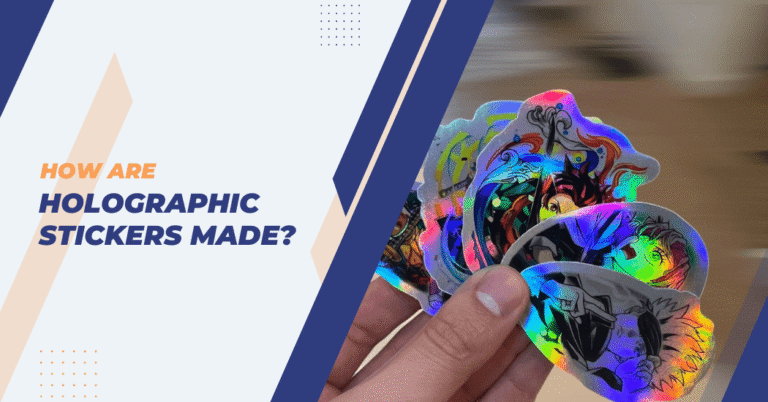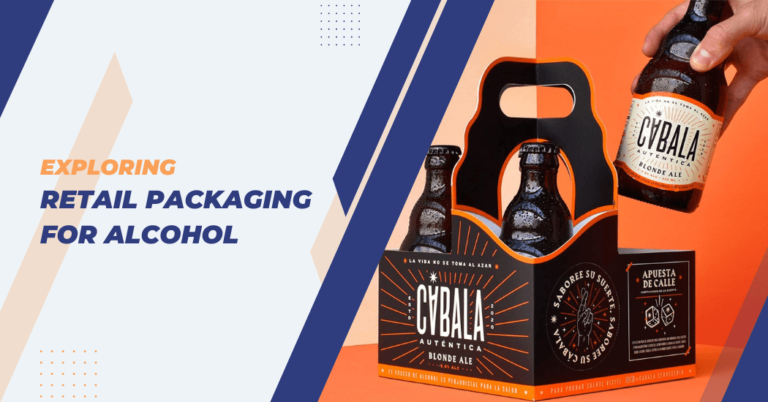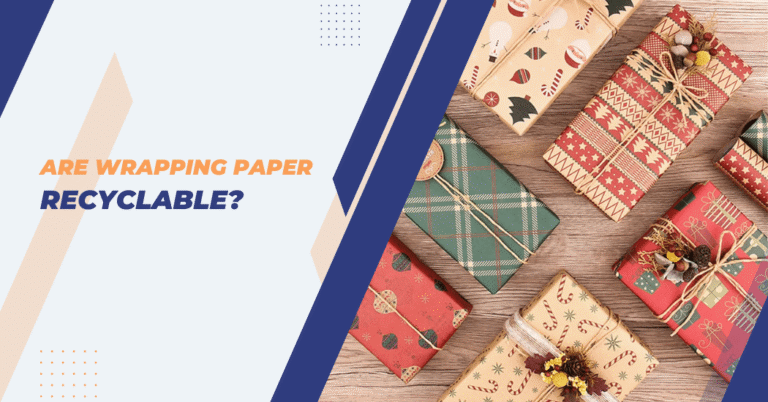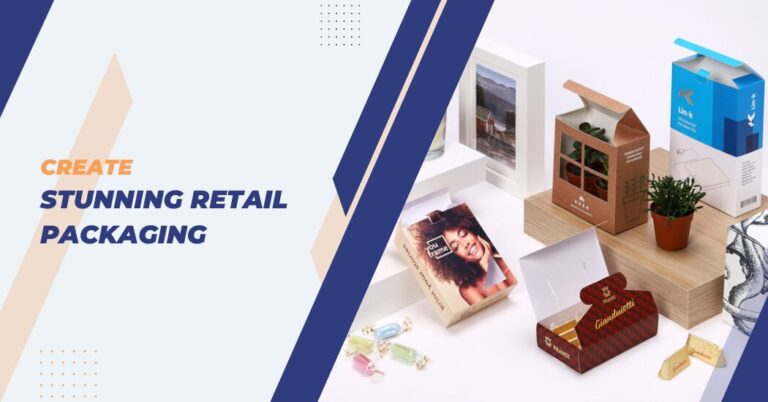What Is Corrugated Packaging?
Corrugated packaging is a ubiquitous and versatile form of packaging that plays a vital role in protecting, shipping and displaying various products. It consists of a fluted corrugated sheet sandwiched between flat linerboards, providing strength, durability and cushioning.
This type of packaging is widely used across industries due to its cost-effectiveness, lightweight nature and eco-friendly properties. Understanding the basics of corrugated packaging is essential for businesses aiming to optimize their packaging solutions for efficiency, sustainability and product protection.
In this exploration, we delve into the fundamentals of corrugated packaging, shedding light on its significance in packaging design, logistics and environmental stewardship.
Corrugated Packaging
Corrugated packaging is a type of cardboard made up of three layers: an inner layer, also known as the “fluting,” sandwiched between two outer layers, called “liner boards“. The combination of these layers provides corrugated packaging with its distinctive strength and durability.
The fluted layer gives the material its characteristic zigzag pattern that runs parallel to the length of the sheet, providing it with rigidity and cushioning. On the other hand, liner boards provide a smooth surface for printing and protect the inner layer from moisture and damage.
Manufacturing Process of Corrugated Packaging
The manufacturing process of corrugated packaging involves several steps, from sourcing raw materials to producing the final product.
Here is a step by step breakdown of how corrugated packaging is made:
- Sourcing Raw Materials: The first step in creating corrugated packaging involves sourcing raw materials such as paperboard, starch and adhesive.
- Creating the Fluted Layer: The first layer of corrugated packaging is the fluted layer, which is created by passing sheets of paperboard through a corrugating machine. This process involves applying heat and pressure to create the characteristic “S” shape or flutes.
- Adding Liner Boards: The second step is adding the liner boards to both sides of the fluted layer. This can be done by gluing the liner boards to the fluted layer or using a corrugating adhesive.
- Cutting and Shaping: Once all three layers are bonded together, the resulting material is fed into a rotary die-cutting machine, which cuts it into various shapes and sizes according to customer specifications.
- Printing: After cutting and shaping, the corrugated packaging is ready for printing. The smooth surface of the liner boards allows for high-quality printing, making it an ideal option for branding and marketing purposes.
- Assembling: Once printed, the corrugated packaging is then assembled into its final form by folding, gluing and taping the various components together.
- Quality Control: Before being shipped out, the corrugated packaging undergoes rigorous quality control checks to ensure it meets industry standards and is free from defects.
Types of Corrugated Packaging
There are various types of corrugated packaging available, each with its unique set of properties and applications.
Here are some of the most common types:
- Single-Wall Corrugated: As the name suggests, single-wall corrugated packaging consists of one fluted layer sandwiched between two liner boards. This type is commonly used for lightweight products and shipping boxes.
- Double-Wall Corrugated: Double-wall corrugated packaging consists of two layers of fluted material sandwiched between three liner boards. It provides extra strength and durability, making it suitable for heavier products or items that require additional protection during transit.
- Triple-Wall Corrugated: Triple-wall corrugated packaging is the strongest and most durable type, consisting of three layers of fluted material sandwiched between four liner boards. It is commonly used for shipping heavy or fragile items that require maximum protection.
Benefits of Corrugated Packaging
Corrugated packaging offers numerous benefits for businesses, customers and the environment. Some of these include:
- Cost-effectiveness: Corrugated packaging is generally more affordable than other types of packaging materials, making it an attractive option for businesses looking to reduce costs.
- Lightweight: Corrugated packaging is lightweight, making it easier and more cost-effective to transport. This can also help reduce shipping costs.
- Customizable: With a variety of shapes, sizes and printing options available, corrugated packaging offers businesses the flexibility to create unique packaging solutions that fit their specific needs.
- Sustainable: Corrugated packaging is made from renewable resources and it is fully recyclable, making it a sustainable option for businesses aiming to reduce their environmental impact.
- Protection: The layers of corrugated packaging provide excellent cushioning and shock resistance, protecting products during transit and preventing damage.
- Marketing and Branding: The smooth surface of liner boards allows for high-quality printing, making corrugated packaging a great option for showcasing branding and marketing messages.
Limitation of Corrugated Packaging
While corrugated packaging offers many benefits, it also has its limitations. Some of these include:
- Limited Reusability: Unlike some other forms of packaging, corrugated boxes are not suitable for multiple uses and can only be recycled a limited number of times.
- Vulnerable to Moisture: While the liner boards protect from moisture to some extent, corrugated packaging is still susceptible to damage if exposed to excessive moisture.
- Not Suitable for Heavy Loads: While corrugated packaging is strong and durable, it may not be suitable for extremely heavy or bulky items. In such cases, businesses may need to opt for alternative packaging materials.
- Limited Barrier Properties: Corrugated packaging does not provide barrier properties against gases and odors, making it less suitable for products that require such protection.
Applications of Corrugated Packaging
Corrugated packaging is used in various industries and plays a crucial role in protecting products during transit.
Some of the common applications of corrugated packaging include:
- Shipping: Corrugated boxes are widely used for shipping items such as electronics, fragile goods and bulk shipments due to their strength and cushioning properties.
- Retail Packaging: Many retailers use corrugated packaging for their products, especially in the food and beverage industry, thanks to its customizable printing options and cost-effectiveness.
- E-commerce: With the rise of e-commerce, corrugated packaging has become an essential part of shipping and delivering goods purchased online. Its durability and lightweight make it a popular choice among e-commerce businesses.
- Storage: Corrugated boxes are also commonly used for storage purposes, as they can be easily stacked and stored without taking up much space.
- Displays: The versatility of corrugated packaging allows it to be used for point-of-purchase displays and product showcases, making it an ideal option for marketing and branding efforts.
Overall, the applications of corrugated packaging continue to expand as businesses find new and innovative ways to utilize this versatile material.
So, the next time you receive a package in a corrugated box, remember all the steps and benefits that went into creating it.
Environmental Impact of Corrugated Packaging
Corrugated packaging is a sustainable option for businesses aiming to reduce their environmental impact. Here’s how:
- Renewable Material: Corrugated packaging is made from renewable resources such as wood pulp, which can be replenished through responsible forest management practices.
- Recyclable: Corrugated boxes are 100% recyclable and can be easily recycled into new packaging or other paper products.
- Reduced Waste: Corrugated packaging is biodegradable, meaning it will break down naturally over time, reducing waste and landfills.
- Energy Efficient: The manufacturing process for corrugated packaging uses less energy compared to other packaging materials, making it an energy-efficient option.
- Carbon Footprint: Using corrugated packaging can help reduce a business’s carbon footprint, as it has a lower impact on the environment compared to other packaging materials.
Corrugated Packaging VS Other Packaging Materials
| Feature | Corrugated Packaging | Plastic Packaging | Metal Packaging | Glass Packaging |
|---|---|---|---|---|
| Cost | Generally affordable | Can be expensive depending on the type | More expensive due to material cost | Varies, generally more expensive than corrugated |
| Weight | Lightweight | Lightweight but varies with thickness | Heavy | Heavy |
| Environmental Impact | Sustainable, recyclable | Less sustainable, difficult to recycle | Recyclable but energy-intensive in production | Recyclable but heavy and energy-intensive |
| Protection | Offers good cushioning and shock resistance | Depends on thickness, generally provides good protection | Durable, provides excellent protection | Fragile but provides good protection |
| Customizability | Highly customizable in shape, size and printing | Customizable shapes, limited printing options | Limited customization due to production process | Limited shapes, some potential for customization |
| Durability | Strong for lightweight applications, not for very heavy items | Durable, resistant to chemicals and moisture | Very durable, resistant to chemicals | Fragile but resistant to chemicals and temperature changes |
| Barrier Properties | Limited barrier against gases and odors | Good barrier properties | Excellent barrier properties | Good barrier properties |
| Recyclability | Fully recyclable | Recyclable with challenges | Fully recyclable | Fully recyclable |
| Energy Consumption in Production | Relatively low | High, especially for virgin materials | High, recycling is more energy-efficient | High, recycling is energy-intensive |
Challenges in Corrugated Packaging
While corrugated packaging has its advantages, it also presents some challenges that businesses need to address. These include:
- Sustainability: Despite being a sustainable option, corrugated packaging still has room for improvement in terms of reducing waste and environmental impact. Businesses need to continuously invest in research and development to make the production process more eco-friendly.
- Customization: While corrugated packaging offers customizable printing options, it may not always meet the specific needs of certain industries or products. Businesses operating in niche markets may need to look for alternative packaging solutions.
- Transportation and Storage: Due to its lightweight nature, corrugated packaging can be easily damaged during transportation or storage if not handled properly. This can result in additional costs for businesses, such as product replacements or returns.
- Competition from Other Materials: As the packaging industry continues to evolve, corrugated packaging faces competition from alternative materials such as plastic and foam. Businesses need to stay updated with market trends and consumer preferences to stay competitive in the industry.
While corrugated packaging has its limitations, it remains a popular and essential option for businesses worldwide due to its many benefits and versatile applications. With continuous advancements in technology and manufacturing processes, corrugated packaging will continue to evolve and adapt to meet the changing needs of businesses and consumers.
Where to buy Corrugated Packaging?
Corrugated packaging is widely available and can be purchased from various suppliers and manufacturers. Many businesses offer custom corrugated packaging solutions to meet specific needs or branding requirements.
Here are some of the places where you can buy corrugated packaging:
- Local Packaging Suppliers: Local suppliers often have a wide range of corrugated packaging options available, including different sizes, shapes and print designs. They may also offer custom packaging solutions to meet specific needs.
- Online Retailers: Many online retailers specialize in selling corrugated packaging, making it easy for businesses to order in bulk or find unique packaging options for their products. Some even offer design services for custom branding and marketing efforts.
- Directly from Manufacturers: For larger businesses with high-volume packaging needs, purchasing directly from manufacturers can be a cost-effective option. This allows for more customization and better control over the production process.
- Second-hand Packaging Suppliers: For businesses on a tight budget, second-hand packaging suppliers offer affordable options for corrugated boxes that have been used but are still in good condition. This is a sustainable option as it reduces waste and can be a cost-effective solution for certain industries.
Overall, the availability of corrugated packaging is widespread, making it easily accessible for businesses of all sizes. It is important to consider factors such as cost, customization options and sustainability when choosing where to buy corrugated packaging for your business.
FAQs – Corrugated Packaging
What types of products are commonly packaged using corrugated materials?
Corrugated packaging is commonly used for a variety of products, including food and beverage items, electronics, cosmetics, clothing and household goods.
It is also a popular option for shipping boxes and e-commerce packaging due to its durability and customizability. Some businesses may even use it as display or gift packaging. Overall, corrugated packaging can be adapted to suit the needs of almost any product.
Is corrugated packaging recyclable?
Yes, corrugated packaging is recyclable and can be repulped and turned into new paper products. According to the Fiber Box Association, over 96% of corrugated boxes are recycled in the United States alone. This makes it one of the most sustainable packaging options available.
How can I choose the right type of corrugated packaging for my products?
Choosing the right type of corrugated packaging depends on several factors such as the fragility and weight of your products, transportation and storage conditions and branding requirements.
Consulting with a custom packaging manufacturer in Los Angeles can help you determine the best type of corrugated box for your specific needs. Additionally, many businesses offer sample packs or mock-ups to test different options before making a final decision.
Can corrugated packaging be customized to fit specific product dimensions and requirements?
Yes, corrugated packaging can be customized to fit specific product dimensions and requirements. This is one of the advantages of using corrugated materials as it allows for flexibility in design and functionality.
Customization options may include print design, box size, strength and additional features such as handles or inserts.
Final Words
Corrugated packaging is a type of cardboard material made up of multiple layers of paperboard, sandwiched between corrugated sheets. Corrugated packaging stands as a testament to innovation and sustainability within the packaging industry. Its versatility, recyclability and cost-effectiveness have made it an indispensable resource for businesses across the globe.
As we move forward, the commitment of businesses and manufacturers to enhancing its eco-friendliness and customization will undoubtedly ensure that corrugated packaging remains a mainstay in the world of packaging.
Whether you’re a small startup or a large corporation, the benefits of corrugated packaging are undeniable, making it a wise choice for anyone looking to combine functionality with environmental responsibility.






